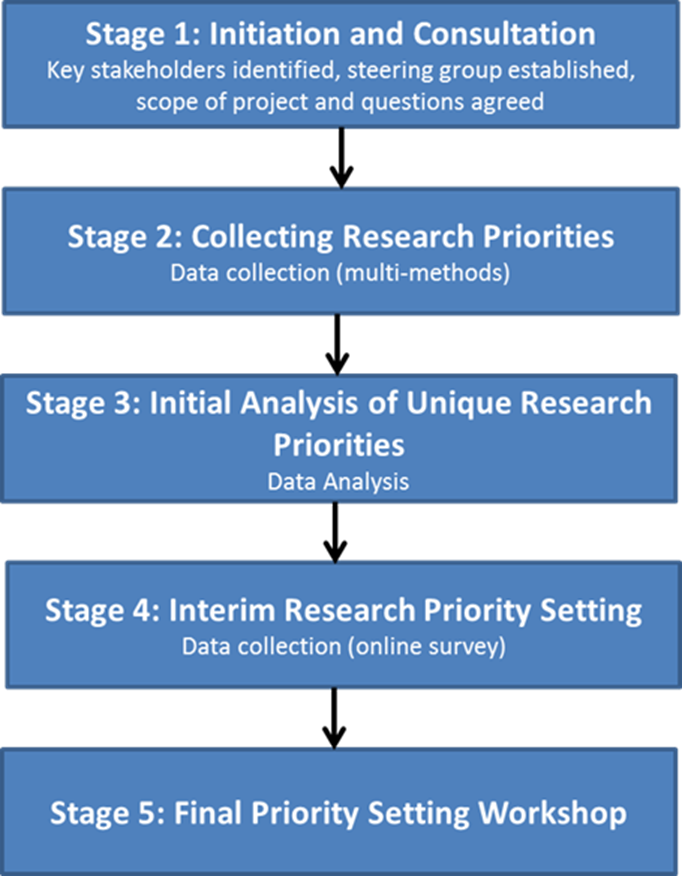Adapting JLA methods to set community priorities
Published: 21 October 2022
News stories on the JLA website are usually published to bring you up to date on JLA and PSP activities and share useful learning from priority setting activity supported by the JLA.
However, this is some news from a team that used and adapted the JLA approach themselves, independently of the JLA, to identify priorities for their diverse local communities. Aamnah Rahman has shared the story with us, and it provides such interesting learning for PSPs that we wanted to pass this on.
Born in Bradford (BiB), based at the Bradford Institute for Health Research, is an established ground-breaking research programme of birth cohort studies . BiB worked with the local community to co-produce research priorities with its ActEarly Healthy Happy Children priority setting research project.
The priorities will feed into the ActEarly Prevention Research Partnership (PRP) Consortia for children and families. The PRP is a national consortium funded by the Medical Research Council and has several themes. BiB proposed to focus on children and young people.
An initial community consultation attended by over 70 people ranging from parents, youth workers, professionals, researchers and others with a keen interest in children’s health and wellbeing was organised to gauge community interest. Although, this community consultation was not considered as part of the priority setting process, it did result in key stakeholders being identified and expressing an interest in becoming part of the community steering group for this project.
The Healthy Happy Children priority setting research programme used an adapted James Lind Alliance Priority Setting Partnership method (see diagram below). It was led by a multi-disciplinary, multi-ethnic steering group between December 2018 and March 2020.
Adapted James Lind Alliance Approach

At stage one of the process, an open-ended questionnaire was designed with direction from the steering group and input from research advisory groups such as the Community Research Advisory Group and Parent Governors Group. It was tested by parents, professionals, researchers and active citizens.
Five questions were included in the questionnaire, each asking people to write their top three points. Question 5 was not used for the priority setting exercise. The questions were as follows:
Question 1 – What things should researchers try and find out to help children be healthy? (List up to 3 things)
Question 2 – What things should researchers try and find out to help children be happy? (List up to 3 things)
Question 3 – What needs to change to help children be healthier? (When answering this question you might want to think about changes your family or friends or other community networks could make, or changes to your neighbourhood).
Question 4 – What needs to change to help children be happier? (When answering this question you might want to think about changes your family or friends or other community networks could make, or changes to your neighbourhood). List your top three things:
Question 5 –If the changes you suggest happen, how could we measure this? (List your top three things from your answers in Q1-4):
Members of the BiB research team collected 5,748 responses from local families and communities using a variety of methods including conversations with children, focus groups (adults and children), paper questionnaires and online surveys (which reached young people, communities, parents, professionals and active citizens), and community engagement events in various settings.
The steering group decided to follow the usual BiB approach of direct community engagement with people whose first language was not English, rather than translating surveys into the wide range of languages spoken Bradford and then having to translate responses back into English whilst accurately retaining the respondent’s original meaning and concerns.
Once the survey was closed and the data had been cleaned and put into subcategories, two consultations were held in community venues. The first community consultation was attended by members of our lay research groups, a few steering group members and BiB researchers (who were facilitating the process). Attendees were asked to prioritise and merge subcategories of questions into main groupings.
Steering group members were invited to a second community consultation where they were asked to review the groupings that emerged from the first community consultation to form a list of priorities. BiB aimed to have between 70 – 80 priorities that could be used at the next stage of the process.
Another survey, including the identified priorities, was due to be circulated. Local communities would be asked to prioritise their top ten priorities that BiB could use for future research and funding bids. The methods of collection would be in the form of a questionnaire and final community consultation. Unfortunately, this stage did not happen due to Covid-19.
Instead, the priorities from the first stage were reviewed by researchers so that they could develop research questions for discussion and agreement with the steering group.
The data that has been collated indicates a few things:
Firstly, the things that people thought needed to change to make young people healthier and happier, were slightly different to the things that the community thought researchers should focus on.
Secondly, BiB is already conducting research in most of the areas the community thinks are important for children’s health and happiness, and it’s reassuring to know that the research being done is of relevance to the local population.
Thirdly, there a few areas such as mental health which are to be focussed on in the Age of Wonder research which is our latest research project aimed at the 11 – 18+ age range.
BiB is in the process of disseminating the findings of the Healthy Happy Children programme in academic papers, reports, summaries and community engagement (speaking to people face to face or communicating via media) and will also use the findings for future funding bids.
Much more detail about how this project was done, and the priorities agreed, is in this International Journal for Equity in Health article https://www.researchsquare.com/article/rs-1474007/v1
Many thanks to Aamnah Rahman for sharing this with us.
